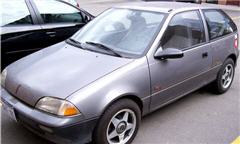Since I have began to drive this Electric Vehicle, even though it's been converted from a fairly efficient Internal Combustion Engine (ICE) Vehicle to Electric - it is to date still powered by old school batteries: Flooded Lead Acid.
This new Whitepaper takes a good look at the performance issues with using Lead Acid Batteries - even the Sealed AGM (Absorbed Glass Matt) types versus Lithium Iron Phosphate. It compares a fairly common Supplier's Product - the EnerSys 12V, 17.2 Ah Sealed Lead Acid (SLA) Battery, and compares it to one of the Lower Performance Lithium Iron Phosphate (LiFePO4) cells - a small 40 Ah Cell from ThunderSky.
(I say Lower Performance - in that it is rated for a Max Continuous Load of 3C versus some that state up to 30c Continuous, but cost 4 - 6 X more per cell, and use smaller cells - requiring more work to build a pack!)
Jump over to my web site and read about it here.
As you read it - you will start to see a trend with Lead Acid (PbA) Batteries - they may be fine at low loads, and long run times are fine like that - but bump up the loads to something used in an Electric Vehicle - and you start to see they just poop out before you know it!
If you think this is unfair to PbA Batteries - well - just think of it like this - first - it is very hard to get specific data like that refered to in the article for a reference Lead Acid Battery - and one can only guess why they make it hard to get cycle life specs at varying loads, as well as actual deliverable amp hour capacity at a large variety of run times. They are typically listed in 20 Hour Ratings - meaning - how much energy can it deliver at a specific load over a 20 hour period.
Take another look at the whitepaper, and then come back to me with more than a half a dozen sites that list battery capacity of PbA (Lead Acid) Batteries at increments of 1 hour declining from the 20 hour starting point to 1 hour, and in your research - you will start to see - that so few suppliers list the data, or make it easy to find, and second - when you find it - you will see - how little they can deliver if you crank up the load just a little bit!
The reality is - for my car - since it was built the way it was when I got it - I have to work with the motor specs that I have! It has a GE (General Electric) Motor rated for 20.9 HP at 90 Volts DC X 184 Amps!
Therefore - we should have a battery (pack) that can decently deliver at least a steady 184 Amps without killing the battery, and then - for a reasonable run time to get the desired range.
We will come back and talk more on this issue in the future! (It will be a bit revealing, for many - I am sure!)
Other Whitepapers with more data will be published and listed here, so keep coming back to see them, or scroll to the bottom of the page and enter your email address where it says - * Be notified when this page changes * to get a notice in your email inbox to go look at it again.
EV Fest Update!
3 years ago


No comments:
Post a Comment